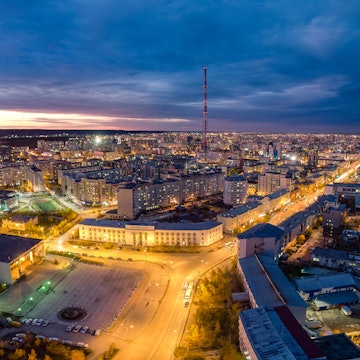

©Chan Srithaweeporn/Getty Images
Overview
The world's largest country offers it all, from historic cities and idyllic countryside to artistic riches, epic train rides and vodka-fuelled nightlife.
The world's largest country offers it all, from historic cities and idyllic countryside to artistic riches, epic train rides and vodka-fuelled nightlife.












![Western Siberian Eagle Owl [Bubo Bubo Sibericus] in full flight](https://lp-cms-production.imgix.net/2019-06/531770715_high.jpg?auto=format,compress&q=72&fit=crop&w=360&ar=1:1)




